Tags:Medical and HealthKantoChubu
Atami City, Shizuoka Prefecture, Izunokuni City, Minato Ward, Tokyo
Impressed by the commonality between the Okada Health and Wellness Program and Heartfulness
A leading expert in Mindfulness research, Professor Shigematsu developed the educational program “Heartfulness” based on Mindfulness. He is providing innovative classes to elites at Stanford University in the United States to enhance their power to live and human power. A psychologist, Professor Stephen Murphy Shigematsu and his wife, China, visited the MOA Museum of Art, Ohito Zuisenkyô (Land of Auspicious Spring), and the Tokyo Wellness Center in July. He deepened his understanding of MOA’s enterprises by observing the efforts of each facility, and experienced the Okada Health and Wellness ProgramOkada Health and Wellness Program. He acknowledged that “there are many commonalities” between his work and the work of MOA.
Mindfulness is a method of directing the mind to the “now” through meditation. It then reduces stress, strengthens concentration, liberates people from the difficulties of living, and promotes a better way of life. Heartfulness connects that power from Mindfulness with compassion and responsibility to encourage action and connect personal growth to social growth. Born in the United States to Irish and Japanese parents, Professor Shigematsu’s experience of discovering the meaning of life and expanding the circle of empathy with others while being tossed about in the past by two cultures and societies which became the basis for his work. Professor Shigematsu’s book, “Stanford’s Psychology Lesson Heartfulness” (Yamato Shobo), has been translated into Japanese and is read by many students and working adults.
This visit was made possible because of Professor Shigematsu’s participation at a seminar hosted by the Sunrise Foundation in Hawaii, USA, through the cooperation of the MOA branch in Hawaii, which deepened the exchanges of MOA with Professor Shigematsu.
On July 3, at the MOA Museum of Art, Director Yasuhiko Saito of the Public Interest Incorporated Foundation-Mokichi Okada Arts and Culture Foundation, and others showed them around the museum’s collection, including the works from the special exhibition of the “Thirty-six Views of Mt. Fuji and The Fifty-three Stations of the Tōkaidō.” They had a discussion with President Kohei Nakajima of MOA International. In light of the social situation in which more and more people are suffering from mental and physical illness due to deepening isolation, they discussed and confirmed how to go about enriching a healthy community in the present situation of disseminating Heartfulness and its meaning, how to foster compassion, as well as health promotion through beauty.
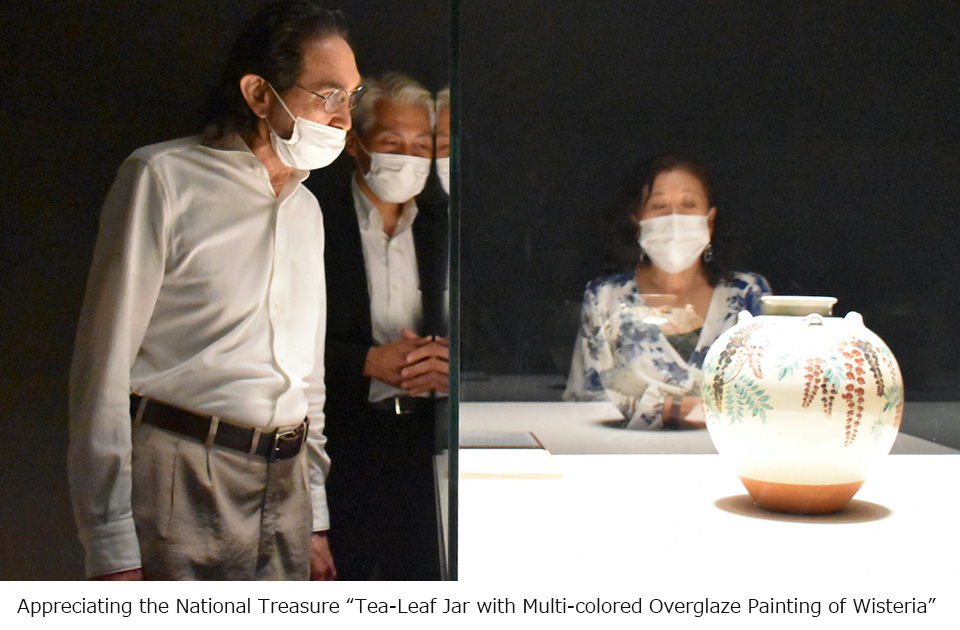
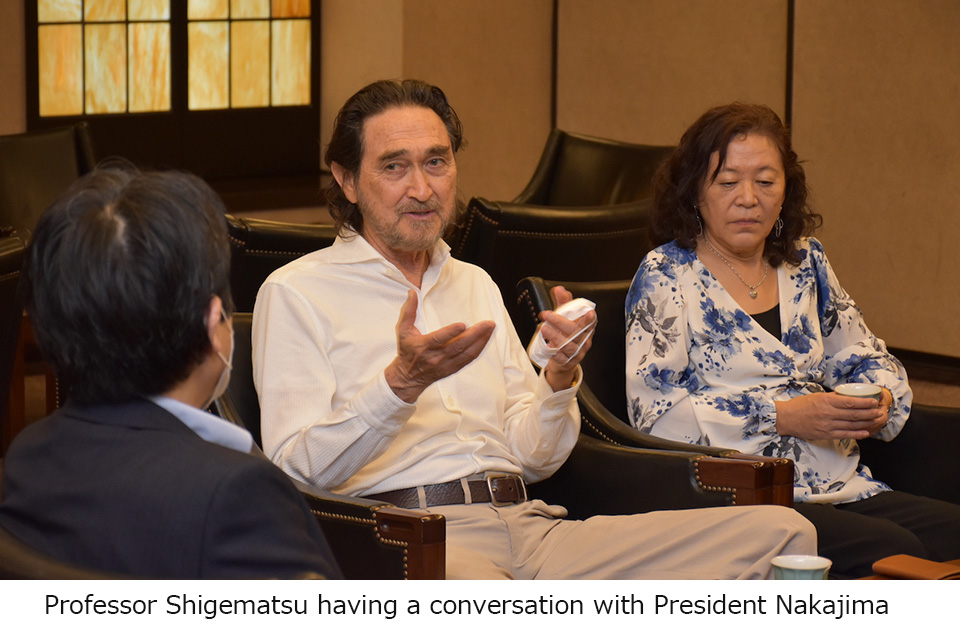
On the 4th, they visited Ohito Zuisenkyô and toured the farm plots and learned about the MOA Nature Farming method guided by Shoji Mizuno, Executive Director of the Agriculture, Environment and Health Research Institute. In addition to experiencing harvesting vegetables as a horticultural therapy, they also tasted a Wellness Center meal using Nature Farming method vegetables in a traditional farmhouse on the farm. Next, Tetsuya Sakuma (medical doctor), Director of the MOA Oku-Atami Clinic, and others guided them around the Oku-Atami Wellness Center, where they experienced a tea ceremony and music therapy. After the discussion with Director Sakuma, Director Mizuno, and Nurse Kenji Tomishima, Professor Shigematsu praised the Ohito Zuisenkyô saying, “There are various kinds of healing according to the needs of each person, and it is an ideal place where one can feel a connection with Nature.”
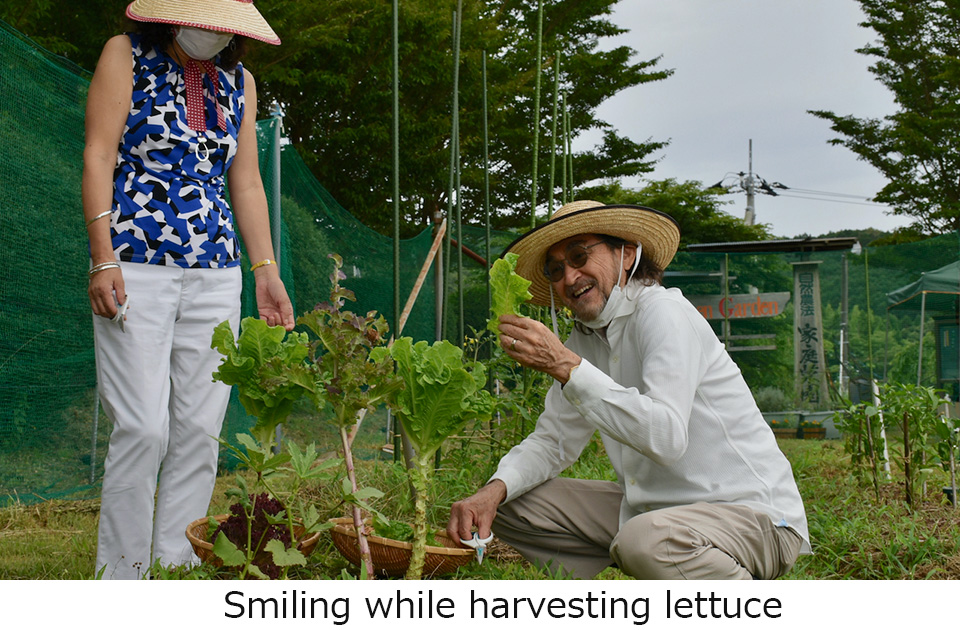
5On the 5th, they visited the Shinkan of the Tokyo Wellness Center. After taking a tour of the facility, they experienced the Okada Health and Wellness Program, which aims to enhance the natural healing power and promote mental and physical health. After receiving an explanation from the Purifying Therapy therapist about the principles and thorough body detection, they took time to experience Purifying Therapy. Next, while receiving guidance from an art health care advisor, they experienced the Arts and Culture Program such as “enjoying flowers” and “enjoying tea ceremony.”
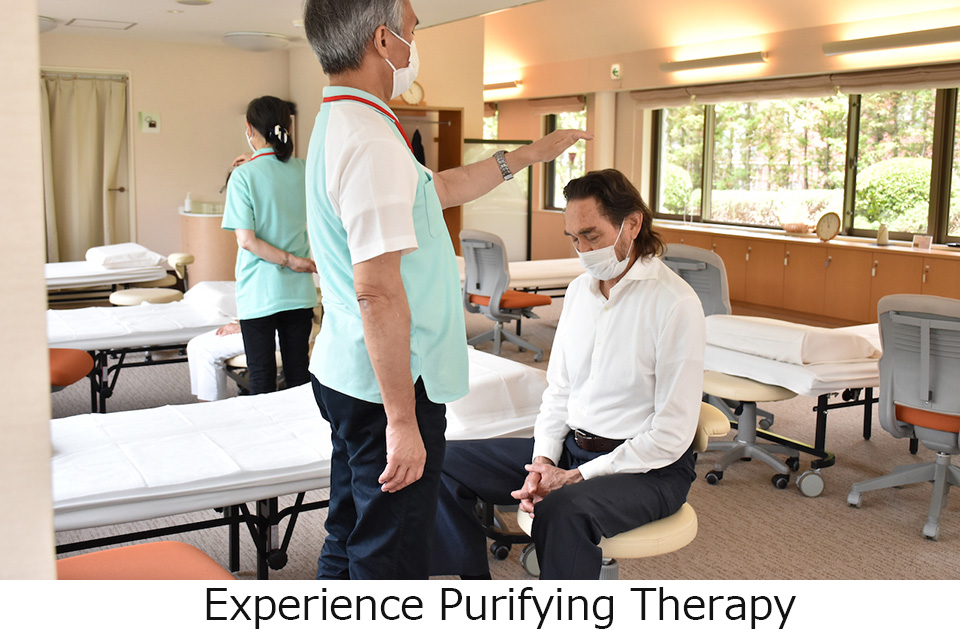
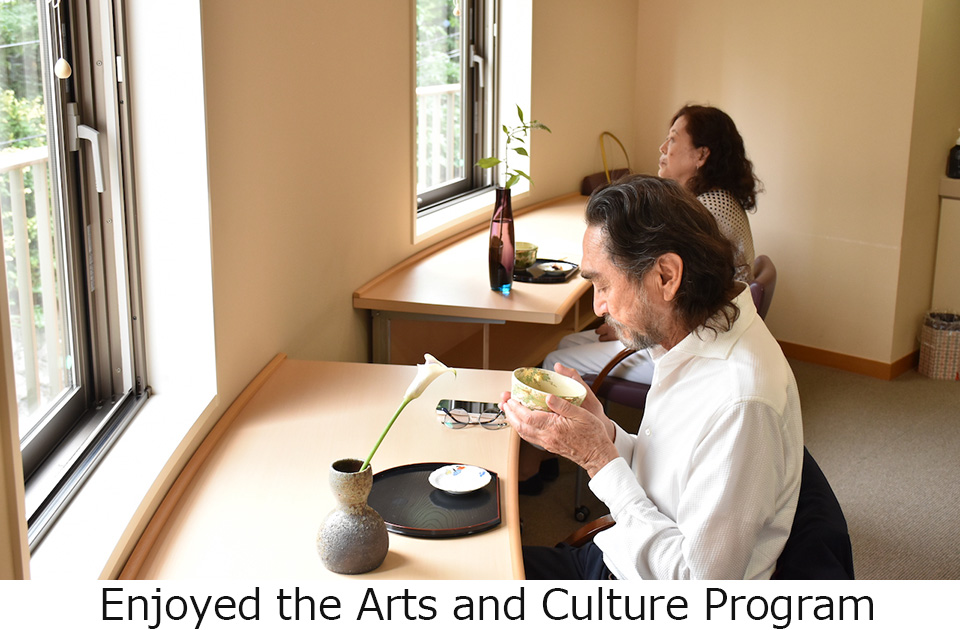
They also had a friendly talk with Kiyoshi Suzuki, President of the MOA Health Science Foundation; Hiroshi Katamura, Director of the MOA Shin Takanawa Clinic; and Shinzo Kato, Director of the MOA Takanawa ClinicMOA Takanawa Clinic. Professor Shigematsu shared how the Heartfulness classes are conducted at Stanford University to the students seeking Heartfulness, commonalities between Heartfulness and the Okada Health and Wellness Program in providing the best care, as well as the significance of compassion and altruistic love that are the basis of Heartfulness.
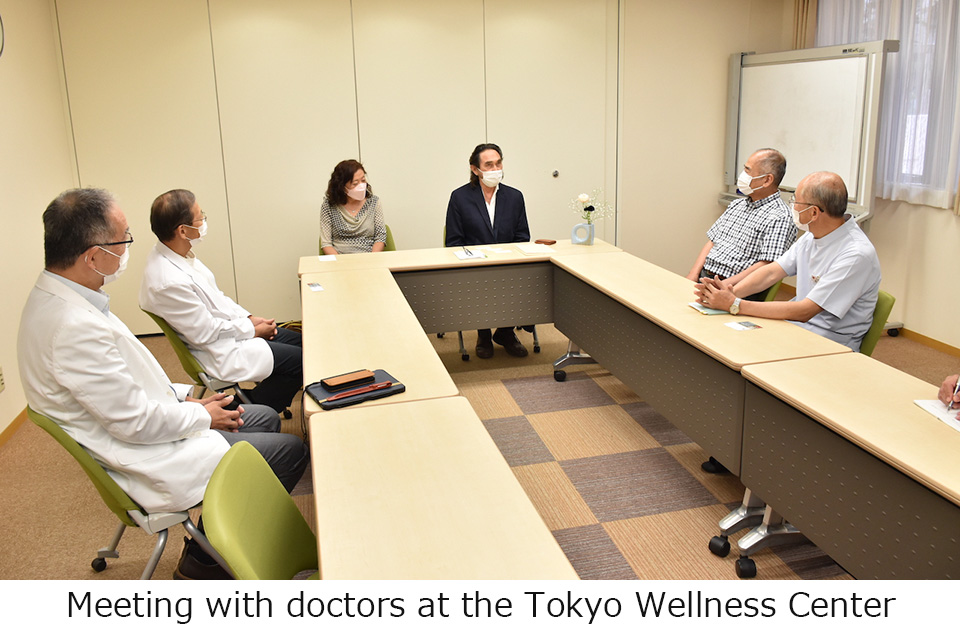
Professor Shigematsu said, “This is the first time I’ve experienced this, but when I was undergoing Purifying Therapy, I felt as if my head had opened, and my body felt like my body had stretched as energy rose from my stomach. My stomach wasn’t feeling well, but I feel like I’m recovering as time goes by. As for the Arts and Culture Program, when I looked at the flowers carefully, the distractions in my head disappeared little by little. The flowers said to me, “Don’t worry. You can be who you are.” I felt like they were affirming everything about me. Each therapy here makes people to become aware of Mindfulness.”
Professor Shigematsu expressed his sympathy for the philosophy and practice of Mokichi Okada, who in order to realize a world free from war, disease, and poverty, Okada established the Okada Health and Wellness Program in order to heal each individual soul (spirituality). Professor Shigematsu said, “I didn’t feel any hesitation at the Clinic of Ohito Zuisenkyo, the natural farming field, the MOA Museum of Art, or here at the Tokyo Wellness Center. I felt that the principle of Heartfulness I advocate is similar to Okada’s philosophy.”






